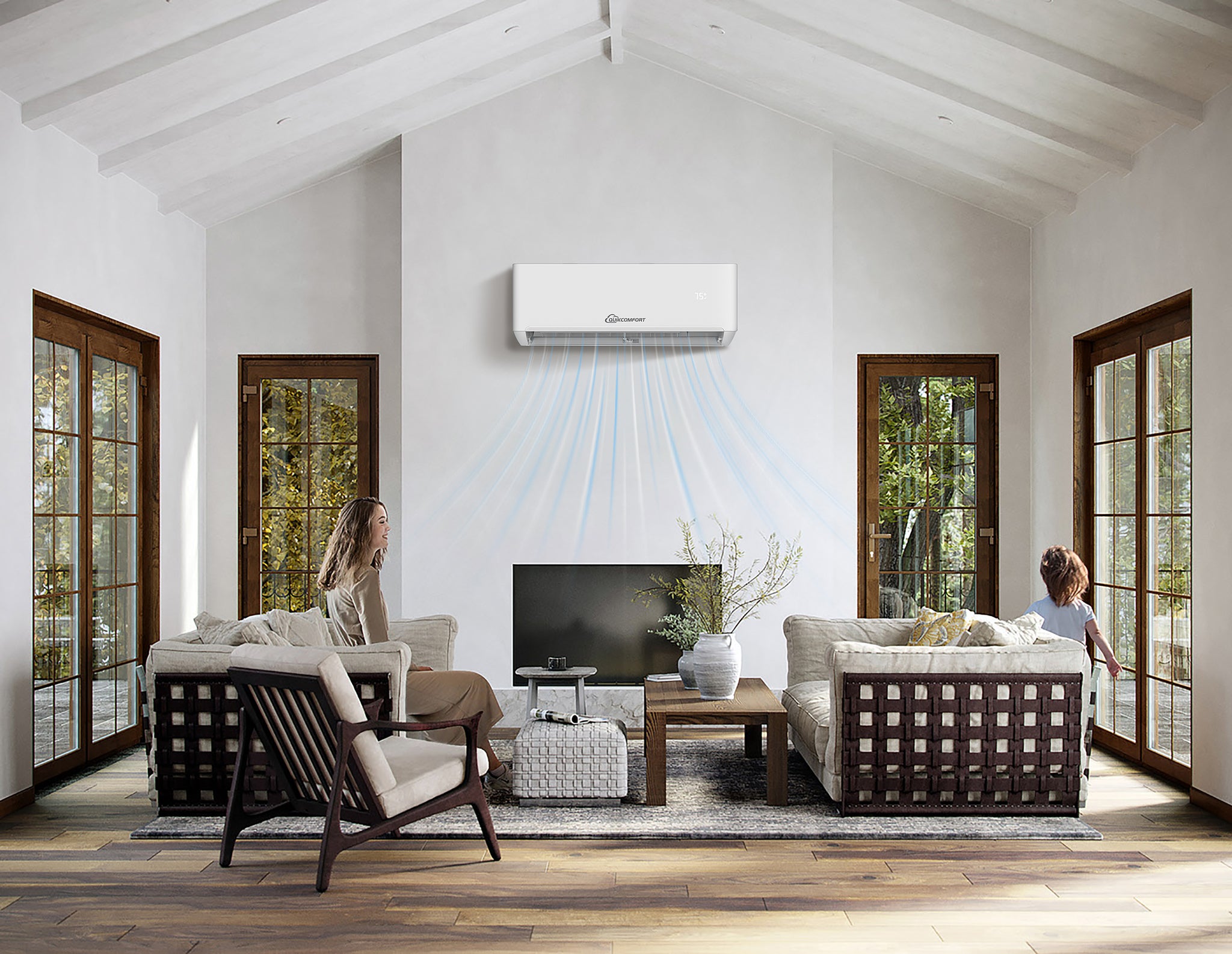How To Choose Your Mini Split / Ductless Air Conditioner
 A ductless mini split A/C is a popular alternative to a traditional vent system. Learn how to pick the right mini split to heat or cool your home.
A ductless mini split A/C is a popular alternative to a traditional vent system. Learn how to pick the right mini split to heat or cool your home.
How Does Mini Split / Ductless Air Conditioning Work?
As the name suggests, ductless mini split A/Cs are designed to work in homes or buildings that don’t have a traditional duct heating and cooling system. Mini splits are a good choice for apartments, older buildings that require a retrofitted heating or cooling system, or any building whose construction doesn’t have room for traditional duct work.
A mini split A/C consists of an indoor air-processing unit, an outdoor compressor/condenser for which a condensate drain must be located nearby, and a conduit that contains refrigerant tubing, suction tubing and a power cable. Some mini split systems are also equipped with heat pumps so you can warm or cool a room with the same unit.
Benefits and Considerations of Mini Split Systems
One of the main disadvantages of duct air conditioning systems is that a certain amount of energy is lost as air travels through the ducts. This can account for energy loss of up to 30%. Because mini split heat pumps and A/Cs don’t use ducts, they’re more eco-friendly.
Mini splits are an ideal choice in applications where a small heating and cooling unit is needed. They’re also useful when zoning, or cooling certain areas or rooms independently, is required. Some outdoor mini split components can be connected to as many as four indoor units that operate with their own thermostats. This can be an economical solution for homes or buildings in which only a few areas are primarily used. When shopping for a mini split, you’ll see systems rated as single zone, dual zone, triple zone, quad zone or more. Ductless A/Cs also offer flexible mounting options, as their fan components can be wall mounted, ceiling mounted or drop ceiling mounted. They can also rest on the floor.
Another benefit of mini split systems is their ease of installation compared to traditional duct systems. In addition, because the connecting conduits come in a variety of lengths, an outdoor compressor can be located farther away from the indoor vents — sometimes up to 50 feet. This can be beneficial for buildings in which the compressor needs to be installed in an inconspicuous place or in a remote location for drainage purposes.
Like all technologies, mini splits do come with a few drawbacks. One is their cost. These units are often more expensive than window A/Cs or duct systems. However, if you factor in the additional cost of retrofitting your home with duct work for a central A/C, they can be a more economical alternative, depending on the type of installation. Mini split A/C units also take up floor, wall or ceiling space. They don’t provide a flush mount installation as many are accustomed to with central air units.
What Size Do I Need?
Because ductless A/Cs are designed to cool only a single room or single area of your home, it’s important to choose one with the right British Thermal Unit (BTU) capacity for the space. Similar to choosing a window unit air conditioner, a bigger room will require more BTUs. If the A/C unit is too small, it won’t be powerful enough to control the temperature. If it’s too large, it can short cycle, or turn on and off too frequently. Short cycling isn’t energy efficient and can significantly reduce the life span of the unit.
Always refer to the manufacturer’s specifications for precise requirements, but here are some general guidelines for various room sizes according to square footage:
- 400 to 650 Square Feet: 12,000 BTUs
- 600 to 1,000 Square Feet: 18,000 BTUs
- 800 to 1,300 Square Feet: 24,000 BTUs
